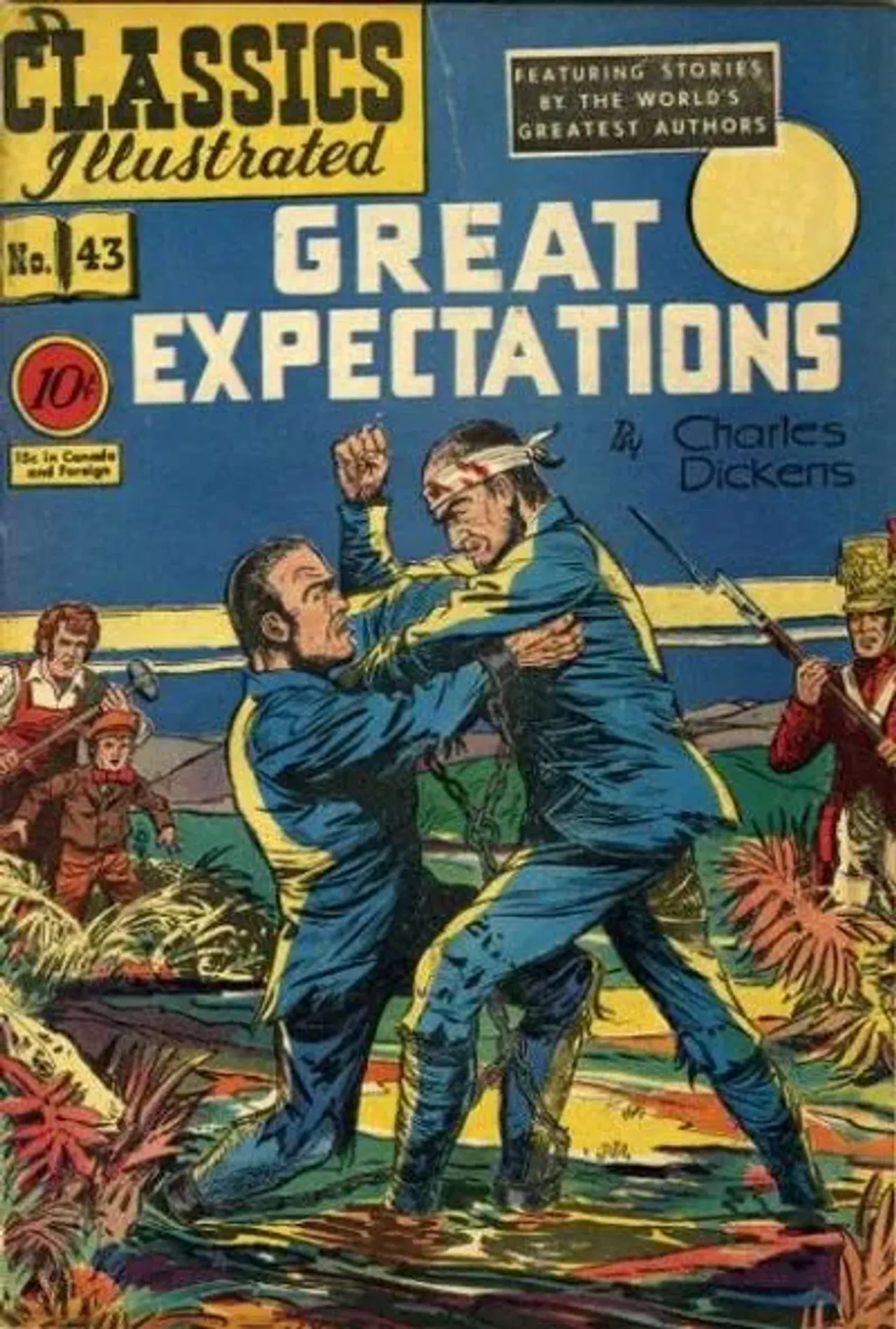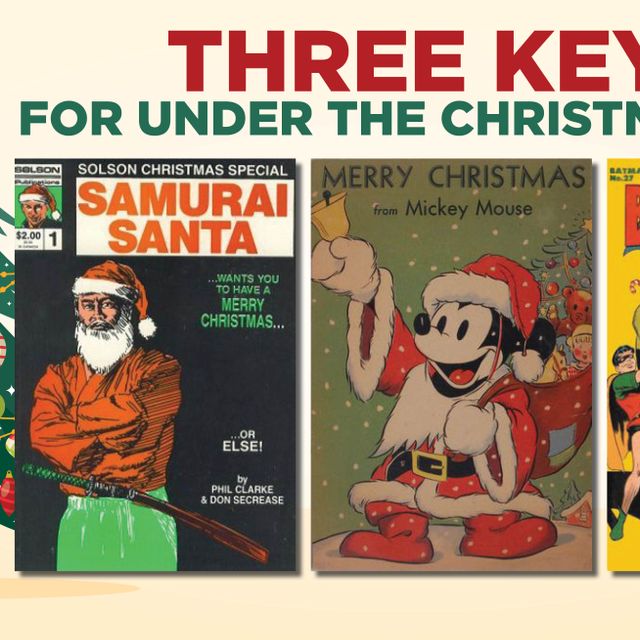You’ve seen them likely countless times in dusty longboxes in comic shops or at conventions. Or perhaps you read them when you were younger, hoping they would give you enough of the plot of a story so you could cheat on that book report. They’re Classics Illustrated. Let’s take a look at this comic book series that offers a unique blend of education and nostalgia.
A Little Classic History
Classics Illustrated began publication in 1941, first by Elliot Publishing and then through the Gilberton Company, under the name Classic Comics, thanks to the vision of Albert Kanter, a Russian-born publisher who believed comic books could be a gateway to classic literature. The first issue, Classic Comics #1 [O] – featuring the Three Musketeers, was an instant hit, followed by titles like Ivanhoe and The Count of Monte Cristo. By 1947, the series rebranded as Classics Illustrated, and, over the next three decades, published a total of 169 issues adapting works by literary giants such as Shakespeare, Dickens, Twain, and a host of others. Kanter’s goal was to make classic literature accessible to young readers through the format of comic books. And it worked – throughout the 1950s, the series was selling hundreds of thousands of copies monthly and had become a staple in classrooms and libraries across the country.
Classic Artists
The series featured a rotating roster of artists of varying talents and abilities, and some more well-known artists who were prominent figures in the Golden Age. Early issues in the series had sometimes gaudy line drawn covers, while painted covers became the norm beginning in the early 1950s. Among the series’ most notable regular artists were Alex Blum, Henry C. Kiefer, and Norman Nodel. While not exactly a Murderer’s Row of Golden Age greats, each has their fans among the series’ collectors. However, there were some big names associated with Classics Illustrated, including Golden Age legends like Matt Baker, LB Cole, Reed Crandall, Joe Orlando, John Severin, and Al Williamson, who lent their talents to the series at various points.
Deciphering HRN
If you think reprints of modern comics are dizzying, you haven’t seen anything until you’ve tried to decipher the extensive reprint history of Classics Illustrated. Nearly every issue was reprinted, some as many as 25 times, with changes in cover art, interior illustrations, and even page count. This is where the HRN system comes in.
HRN, or Highest Reorder Number, is a tool used to identify the printing order of an issue. A list of issues can generally be found on the back cover or inside the front/back covers. The HRN is the highest numbered title listed in this reorder checklist. For example, if your copy of Classics Illustrated #2 lists up to Classics Illustrated #136 in the reorder checklist, then your copy is a later reprint with HRN 136. Original printings are typically identified by a lower HRN (often one number below the issue itself), a 10-cent cover price (15-cent beginning with Classics Illustrated #81 [O]), and an ad for the next upcoming issue inside the cover.
In the GoCollect database, you’ll find first printings noted with an [O] for original printing after the issue number. In terms of collecting, you’ll generally want to target those first printings. One final important note: do not try to use the publication date on the indicia to determine if a copy is an original – Gilberton often didn’t change those dates from the originals for reprintings.
A Note on Paper Quality
The paper quality used to print the issues in the series was, to be blunt, terrible. Age has made the pages and covers brittle and it’s hard to find copies that don’t have some degree of chipping. This makes the hunt for high grade copies – particularly the early issues – far more difficult than it would be for comics from other publishers of an equivalent age. This also means that high grades often sell for far, far more than lower grades. The investment expense curve is exponentially steeper than you normally find for Golden Age and early Silver Age comics.
Classic Comics
So, just which issues should you target if you’re looking to start a Classics Illustrated collection? The first issue of a series is always a good choice. In this case, that would be Classic Comics #1 [O]. Published in 1941, there are 105 graded copies in the CGC census. The highest Universal grade is 9.2. There are two restored 9.4 graded copies. The last time a 9.2 sold was 2014, when one went in a ComicConnect auction for $10,400. Sales this year include a 6.0 for $992 and a 4.0 for $740.
In general, you can’t go wrong with the first ten issues in the series, but one stands out as a favorite among collectors: Classic Comics #8 [O]. The cover and interiors by illustrator and cartoonist Lillian Chestney stand out amongst the other early issues for its unique layout. There is also some controversy regarding the “shadow” above the jinn’s loincloth, a “shadow” that was removed from subsequent reprintings. There are 77 graded copies, including a 9.8 that sold in a 2012 Heritage auction for $5,676. Two 9.0 graded copies sold in Heritage auctions earlier this year for $1,140 and $1,170, while an 8.0 sold in an eBay fixed price sale for $1,245. A 6.0 sold in a January 21 Heritage auction for $384
Classic Comics #13 [O] (HRN 12) is considered by some collectors to be the first horror comic, although that’s definitely a debate worthy topic. There are 57 graded copies, including one 9.0 that has never sold. One of two 8.5 graded copies – the next best grade – sold in an April 15 Heritage auction for $3,120. On the lower end, a 4.0 sold in a May 5 Heritage auction for $504.
Featuring Matt Baker artwork on the cover and throughout the interior, Classic Comics #32 [O] is a surprisingly affordable issue when you consider the prominence of the artist. Best of all, if you're able to get your hands on the first printing, you're getting six pages of Baker art that were never reprinted. There are 47 graded copies with a lone top-of-census 9.4 that has never sold. There are no 9.2s. A 9.0 Promise Collection copy sold in an April 2024 Heritage auction for $1,680. Sales this year include a 5.5 going in a May 20 Heritage auction for just $154 and a 5.0 selling in a June 26 fixed price sale for $210.
Other Classic Comics to consider for a collection of the early issues include Classic Comics #15 [O] (HRN 14) – there are two first printings, the rarer of which is known as the “brown root” version; Classic Comics #21 [O] (Gilberton Edition); Classic Comics #26 [O]; Classic Comics #29 [O]; and Classic Comics #33 [O].
Classics Illustrated
The series name changed to Classics Illustrated in 1947 with Classics Illustrated #35 [O]. There are 40 graded copies in the CGC census. One of two 9.4 graded copies sold in a 2014 Heritage auction for $1,195. The only sale this year was a 7.5 that went in a January 19 eBay auction for $110.
In general, prices and census counts drop as the issues become more recent, although you’ll still find that top-of-census copies command a premium. However, there are less than a handful of issues that were never reprinted that are worth hunting down. The most popular of these is Classics Illustrated #53 [O]. There are 77 graded copies, but the higher grades don’t come up for sale very often; in fact, the five top-of-census 9.4s have never sold. Sales this year have ranged from $80 for a 5.0 to $204 for a 7.5.
The other issues that were never reprinted include Classics Illustrated #66 [O], Classics Illustrated #73 [O], and Classics Illustrated #74 [O].
Reprints to Consider
Despite everything that has been said to this point regarding the primacy that first printings should take in your search for issues, there are a couple second printings to consider as well. This is due to their relative scarcity when compared to the first printings. Please note that as of yet, there are no graded copies of either. First among these is Classics Illustrated #144 (HRN 152), while the second is Classics Illustrated #147 (HRN 152). Both should be considered worthy of a hunt for raw copies.
The Final Issues
The final issue in the series, Classics Illustrated #167 [O] was published in 1962. Gilberton losing its second class postage permit was the primary culprit for the series’ demise, although the publication of Cliff’s Notes beginning in 1958, and its leapfrogging of Classics Illustrated as a primary source of “cheating” on book reports, cannot be discounted. Television was beginning to climb in popularity as well, drawing eyeballs away from comic books. There aren’t many graded copies of this final issue – just 9 – but that’s less a function of scarcity, and more one of lack of value. Raw copies abound, so it shouldn’t be too hard to find one.
But wait. Weren’t there 169 issues in the series? Why, yes. Two additional issues had been planned – an adaptation of In Freedom’s Cause, by G.A. Henty and the fully original Negro Americans: The Early Years. Both did eventually see publication. In 1967, Kanter sold Gilberton to Twin Circle Publishing Co., who published both issues in 1969 as Classics Illustrated #168 [O] and Classics Illustrated #169 [O] respectively (at least in America - both issues had been printed in the UK years earlier). Of the two, the final issue is more highly regarded by collectors. There are 27 graded copies of Classics Illustrated #169 [O] in the CGC census, the highest being a 9.6 that has never sold. Recent sales include an 8.5 selling in a June 7 fixed price eBay sale for $449, while a 9.0 sold in a July 15 Heritage auction for $402.
Classic Epilogue
So, why should someone in this day and age consider collecting Classic Illustrated? Like many Golden Age comics, they’re a unique snapshot in time that allow us a glimpse into a world before mass electronic communications took over. They were incredibly popular during their time and sold numerous copies. While there are still many floating around out there, high grade copies are hard to find.
There are also ancillary series to consider as well, such as Classics Illustrated Junior and Classics Illustrated Giants, and copycats like Fast Fiction and Stories By Famous Authors Illustrated. Plus, there are internationally published issues - particularly the British ones - that are highly regarded by collectors. Comic renditions of classic literature represented an entire genre of Golden Age publishing, one that is oft overlooked by today’s collectors. Maybe it’s time to reconsider these Classics.
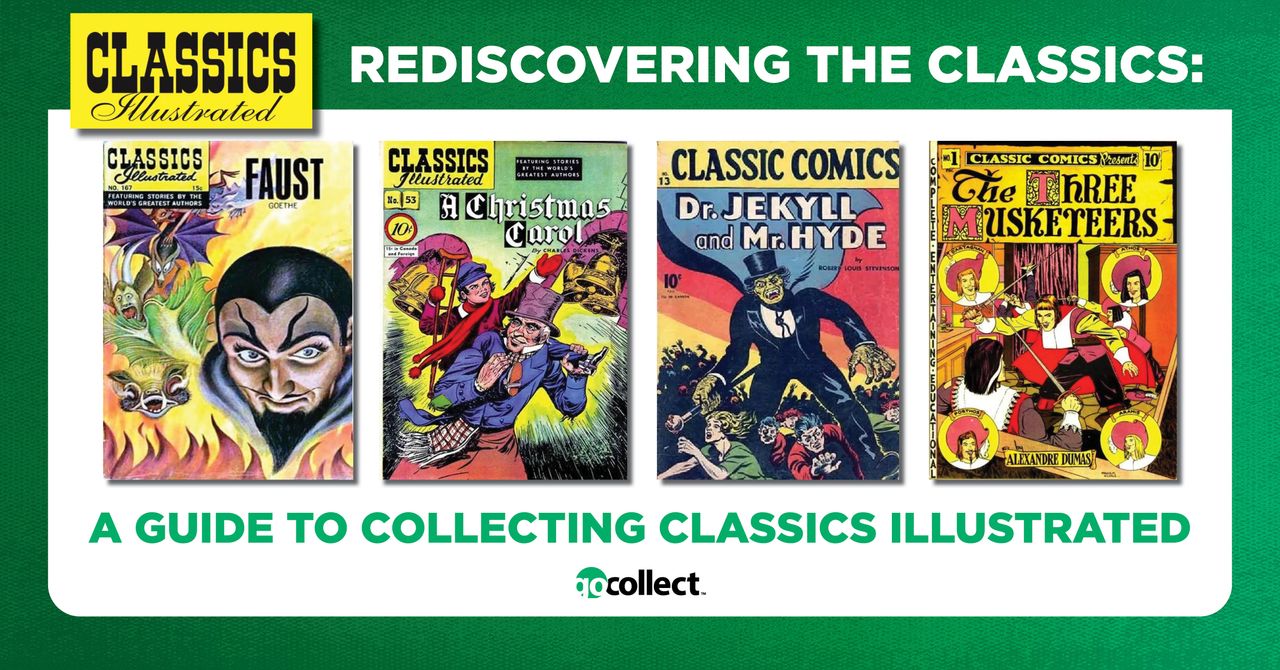
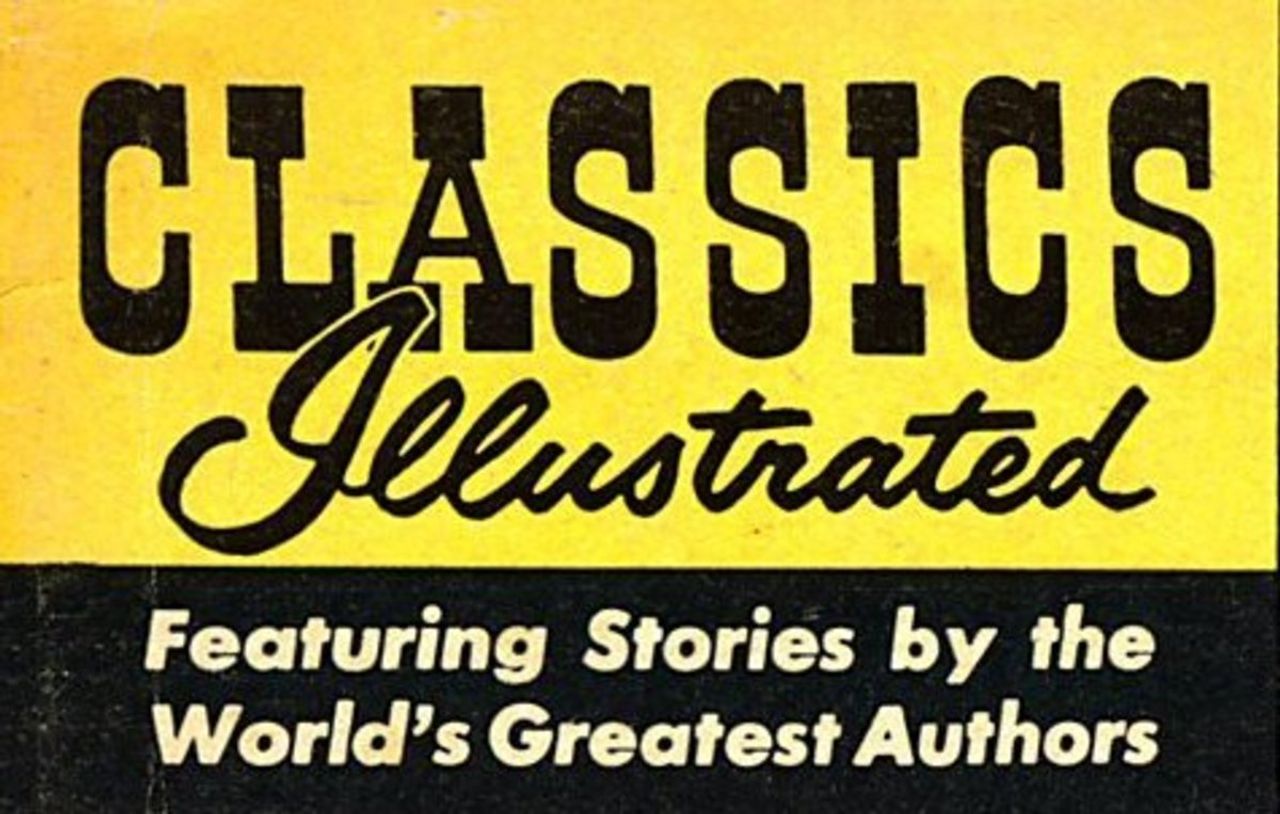
![ClassicsIll55[O]](https://img.gocollect.com/eyJidWNrZXQiOiJnb2NvbGxlY3QuaW1hZ2VzLnN0YWdlIiwia2V5IjoiYmxvZ1wvZDQxYWRmMmYtYzlkYi00OWE4LWIxMDctYTVmNjk5MDUzYzEwLmpwZyIsImVkaXRzIjp7InJlc2l6ZSI6eyJ3aWR0aCI6MTI4MH19fQ==)
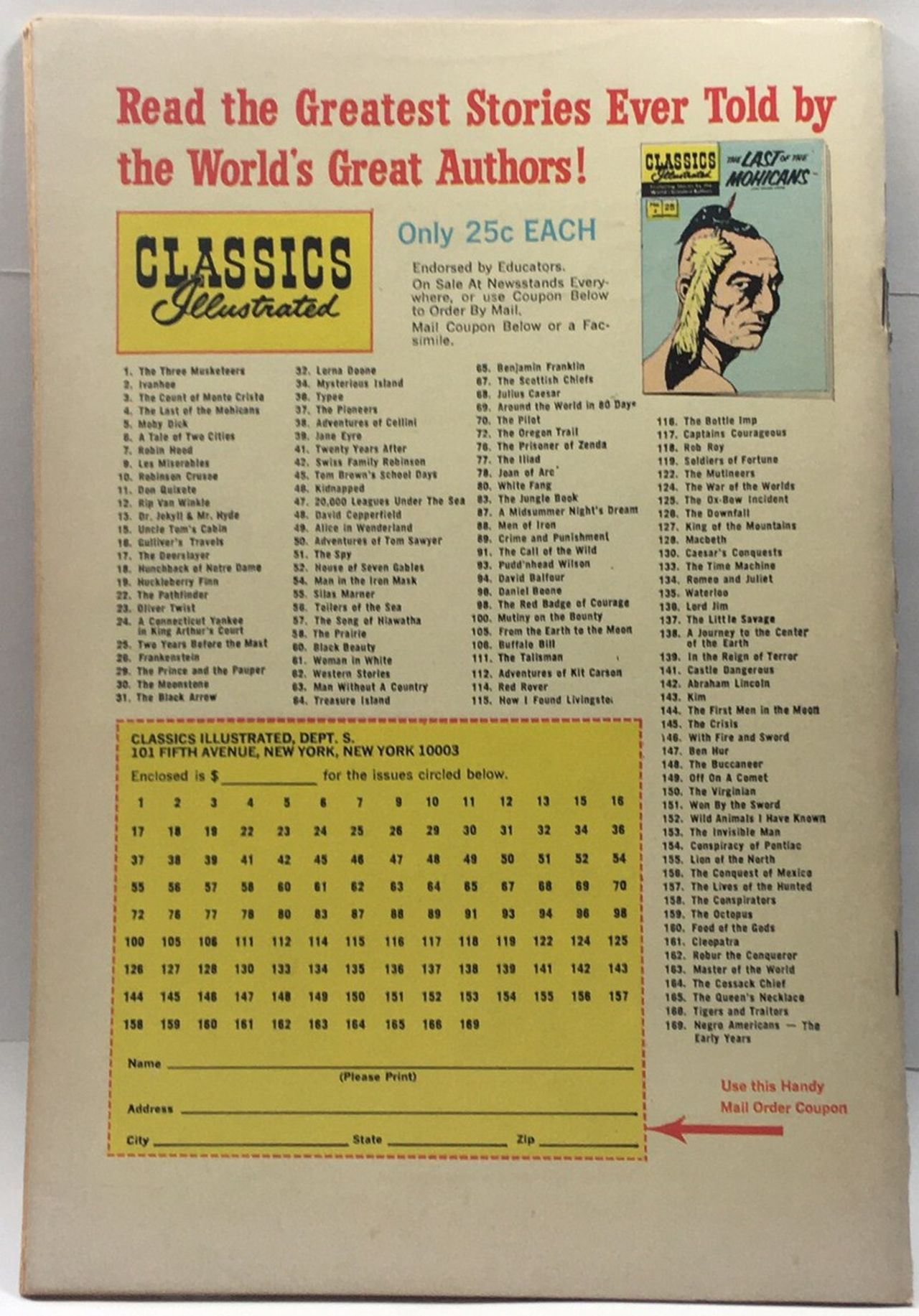
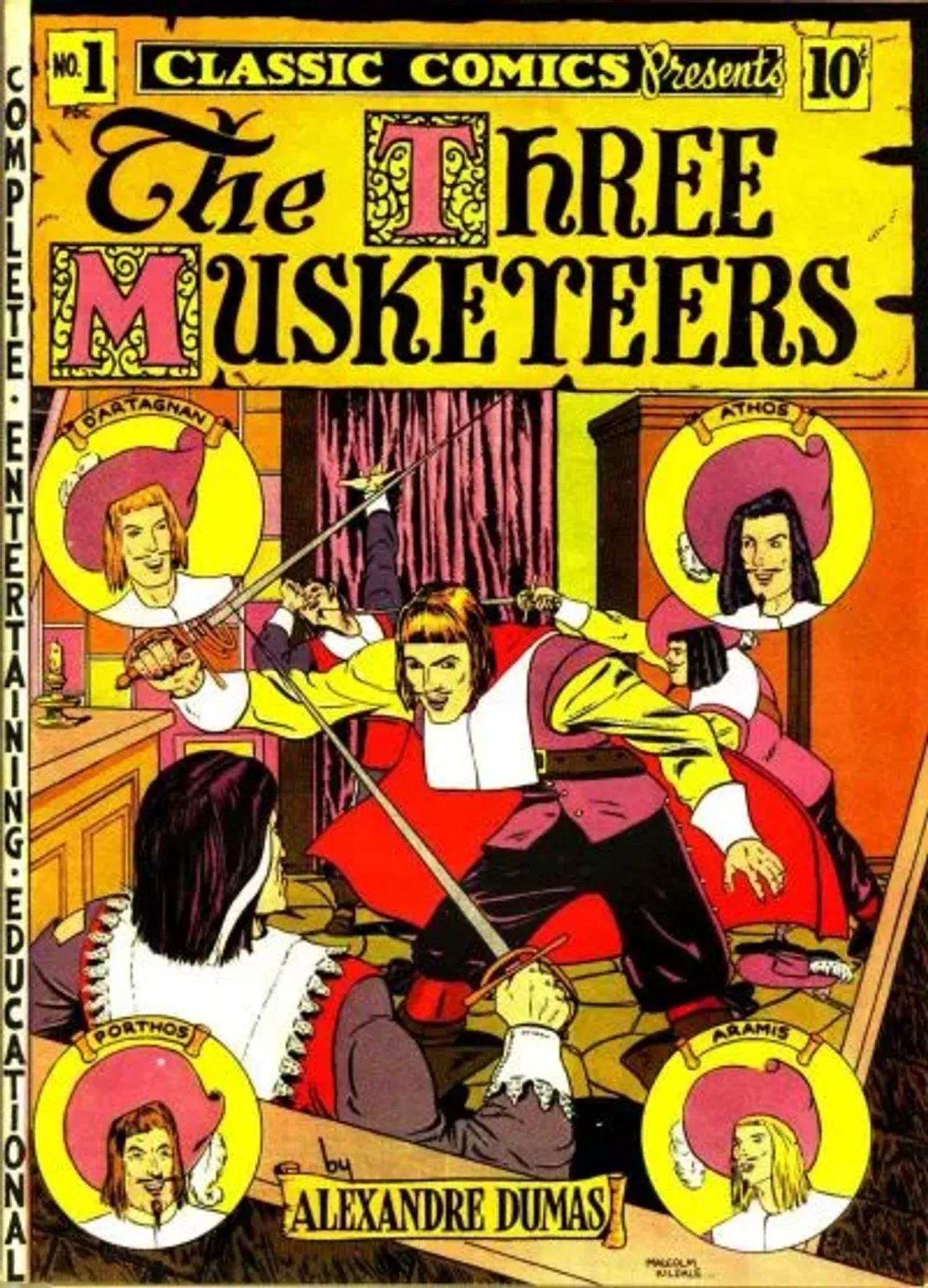
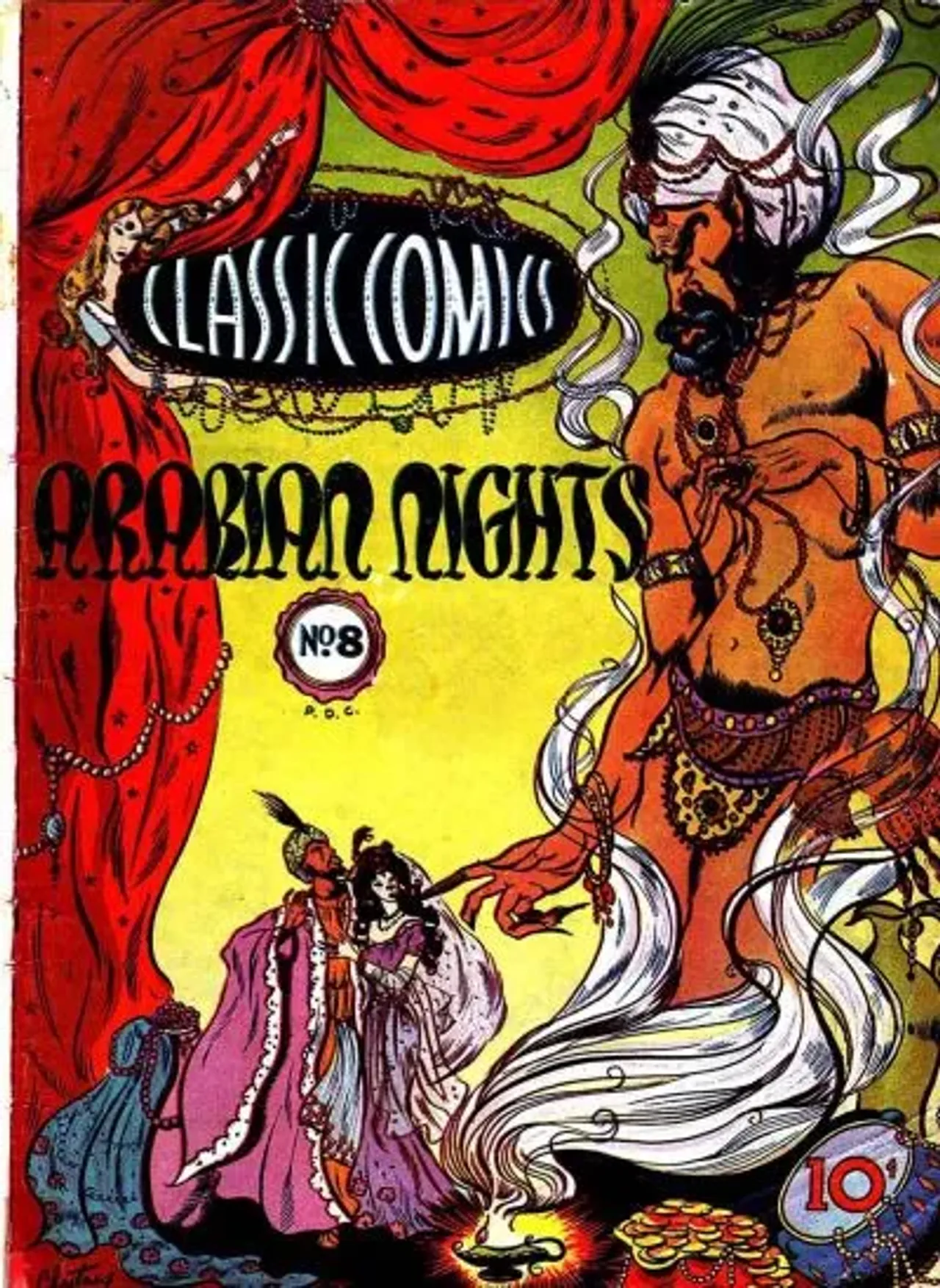
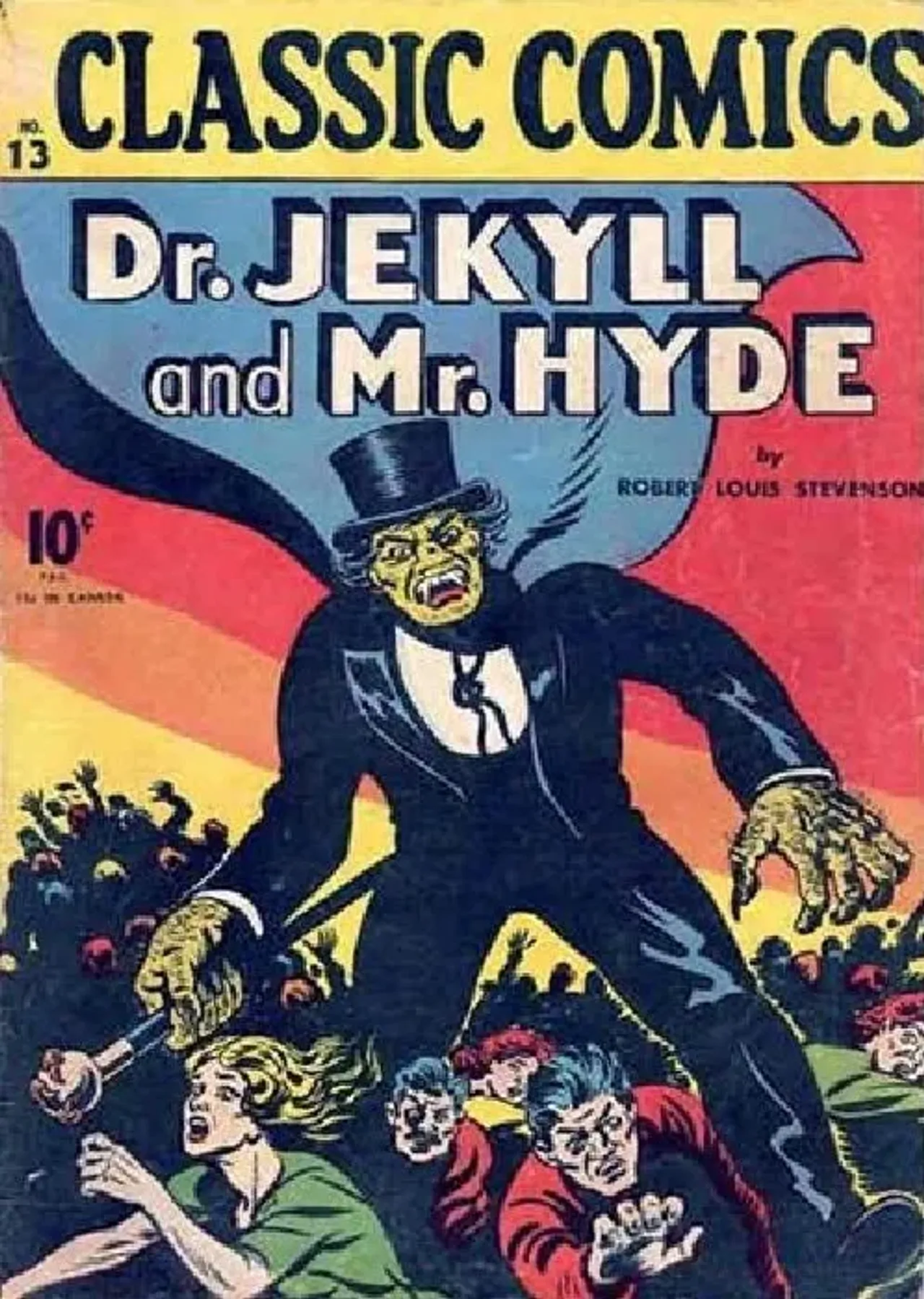
![ClassicComics32[O]](https://img.gocollect.com/eyJidWNrZXQiOiJnb2NvbGxlY3QuaW1hZ2VzLnN0YWdlIiwia2V5IjoiYmxvZ1wvODZiZDBjZmEtNDhiMC00Y2FmLTg5NjQtNTNmNGIyOTA1MDYzLmpwZyIsImVkaXRzIjp7InJlc2l6ZSI6eyJ3aWR0aCI6MTI4MH19fQ==)
![ClassicsIll35[O]](https://img.gocollect.com/eyJidWNrZXQiOiJnb2NvbGxlY3QuaW1hZ2VzLnN0YWdlIiwia2V5IjoiYmxvZ1wvZmMxZjk5YjAtNGI0YS00ZDZkLTgyZWMtMGY4ZjNkZWU4ZDEwLmpwZyIsImVkaXRzIjp7InJlc2l6ZSI6eyJ3aWR0aCI6MTI4MH19fQ==)
![ClassicsIll53[O]](https://img.gocollect.com/eyJidWNrZXQiOiJnb2NvbGxlY3QuaW1hZ2VzLnN0YWdlIiwia2V5IjoiYmxvZ1wvZDJhYjRlZmQtYzdkNS00NjFiLWFmNTItMmQ4ZWVhMzNjODQyLmpwZyIsImVkaXRzIjp7InJlc2l6ZSI6eyJ3aWR0aCI6MTI4MH19fQ==)
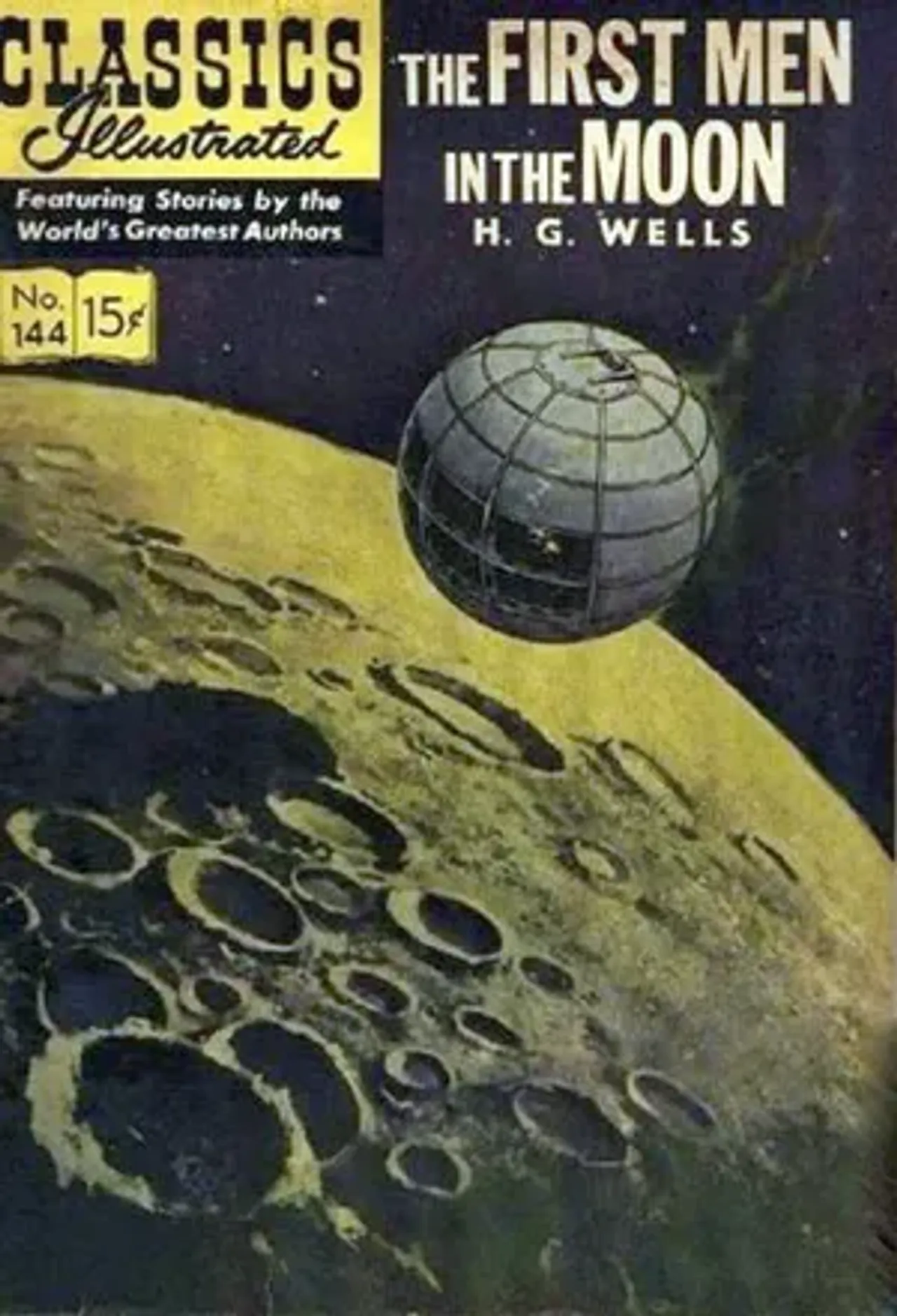
![ClassicsIll167[O]](https://img.gocollect.com/eyJidWNrZXQiOiJnb2NvbGxlY3QuaW1hZ2VzLnN0YWdlIiwia2V5IjoiYmxvZ1wvOTc1YzM4Y2UtZTMyNS00ZDQzLWE4MzMtODA4MTZkOTBiNmMzLmpwZyIsImVkaXRzIjp7InJlc2l6ZSI6eyJ3aWR0aCI6MTI4MH19fQ==)
![ClassicsIll169[O]](https://img.gocollect.com/eyJidWNrZXQiOiJnb2NvbGxlY3QuaW1hZ2VzLnN0YWdlIiwia2V5IjoiYmxvZ1wvNDY4YzljNjUtNjU5ZC00NWZhLWJkNGItMjQ0ZWQ5NTEzMzJmLmpwZyIsImVkaXRzIjp7InJlc2l6ZSI6eyJ3aWR0aCI6MTI4MH19fQ==)
